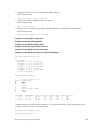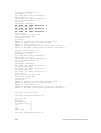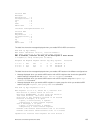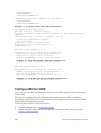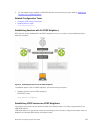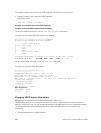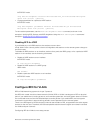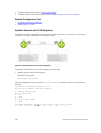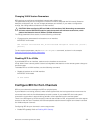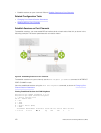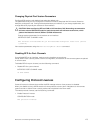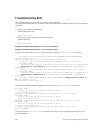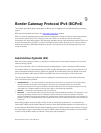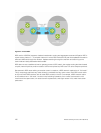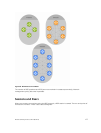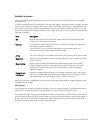
Changing VLAN Session Parameters
BFD sessions are configured with default intervals and a default role.
The parameters that you can configure are: Desired TX Interval, Required Min RX Interval, Detection
Multiplier, and system role. You can change parameters per interface, if you make a configuration
change, the change affects all sessions on that interface.
CAUTION: When configuring BFD on VLAN or LAG interfaces, Dell Networking recommends a
minimum value of 500 milliseconds for both the transmit and minimum receive time, which
yields a final detection time of (500ms *3) 1500 milliseconds.
To change parameters for a session, use the following commands.
• Change session parameters for all sessions on an interface.
INTERFACE VLAN mode
bfd interval milliseconds min_rx milliseconds multiplier value role [active |
passive]
To view session parameters, use the show bfd neighbors command, as shown in the example
Changing Physical Port Session Parameters.
Disabling BFD for VLANs
If you disable BFD on an interface, sessions on the interface are torn down.
A final Admin Down control packet is sent to all neighbors and sessions on the remote system change to
the Down state.
To disable BFD on a VLAN interface, use the following command.
• Disable all sessions on a VLAN interface.
INTERFACE VLAN mode
no bfd enable
Configure BFD for Port-Channels
BFD on port-channels is analogous to BFD on physical ports.
If you enable the no routing protocol, and a remote system fails, the local system does not remove the
connected route until the first failed attempt to send a packet. If you enable BFD, the local system
removes the route when it stops receiving periodic control packets from the remote system.
There is one BFD agent for VLANs and port-channels that resides on RP2, as opposed to the other agents
that are on the line card. Therefore, the 100 total possible sessions that this agent can maintain is shared
for VLANs and port-channels.
Configuring BFD for port-channels is a two-step process:
• Enable BFD globally. Refer to Enabling BFD Globally.
Bidirectional Forwarding Detection (BFD)
171



